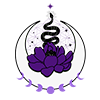Learning How to Identify Your Triggers
Triggers are stimuli that can cause a person to have a negative emotional or behavioral response.
Identifying your triggers can be an important step in managing your emotions and behaviors, and can help you better understand yourself and your reactions to the world around you. Here are some steps to help you identify your triggers:
- Keep a journal: Start by keeping a journal of your thoughts, feelings, and behaviors. Record your reactions to different situations, and try to identify any patterns that emerge. Look for situations that seem to consistently trigger negative reactions, and consider what about those situations might be causing the reaction.
- Consider your past experiences: Past experiences, particularly traumatic or stressful ones, can have a lasting impact on our emotions and behaviors. Think about any experiences you’ve had that might be contributing to your current triggers.
- Reflect on your beliefs and values: Our beliefs and values can play a role in our reactions to certain situations. Take some time to think about what you value most and how those values might be influencing your reactions.
- Pay attention to your physical reactions: Our bodies can often provide clues about what is going on emotionally. Pay attention to any physical reactions you have when you feel triggered, such as tense muscles, rapid breathing, or a racing heart.
- Talk to someone you trust: Sharing your experiences and thoughts with someone you trust can be a helpful way to gain insight into your triggers. A friend, family member, or therapist can provide a different perspective and help you identify patterns you might not have noticed on your own.
Once you’ve identified your triggers, you can start working on managing your reactions to them. This might involve finding healthy coping mechanisms, such as talking to a trusted friend or engaging in self-care activities, or seeking professional help if necessary.
Remember that it’s okay to feel triggered and that it’s normal to have emotional reactions to certain stimuli.
By identifying and managing your triggers, you can learn to better understand and regulate your emotions.
Download Your Free Resource
Download this free printable/fillable worksheet to help you identify and work through your different types of triggers.






